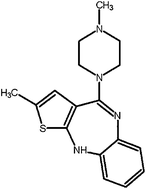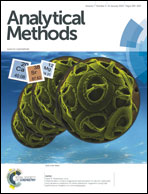New voltammetric analysis of olanzapine in tablets and human urine samples using a modified carbon paste sensor electrode incorporating gold nanoparticles and glutamine in a micellar medium
Abstract
An effective novel electrochemical sensor for the selective determination of olanzapine (OLA) was introduced. The prepared sensor was based on a carbon paste electrode chemically modified with glutamine (GL) and gold nanoparticles (GNs) in the presence of sodium dodecyl sulphate (SDS) in the medium. The effect of carbon paste composition and scan rate were tested. The working solution pH was 7. The analytical method validation parameters were studied. The linear response was obtained for OLA in the range of 5 × 10−7 to 1.25 × 10−4 M with a correlation coefficient of 0.9986. LOD and LOQ were calculated and found to be 3.58 × 10−9 and 1.19 × 10−8 M, respectively. The utility of this sensor was examined for the determination of OLA in its pharmaceutical dosage form and human urine. Also the proposed method was applied for the simultaneous determination of OLA, fluoxetine (FLX), ascorbic acid (AA) and uric acid (UA).


 Please wait while we load your content...
Please wait while we load your content...